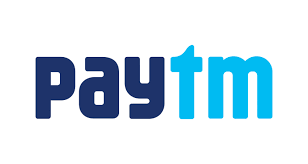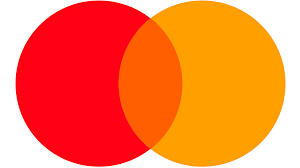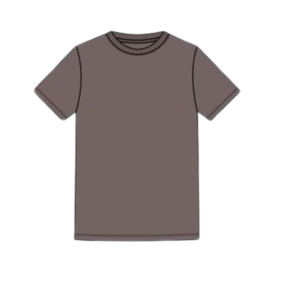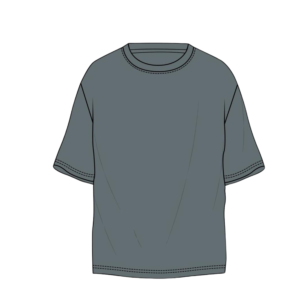DTG Print: What It Is, Its Importance, and Why It’s Revolutionizing the Apparel Industry
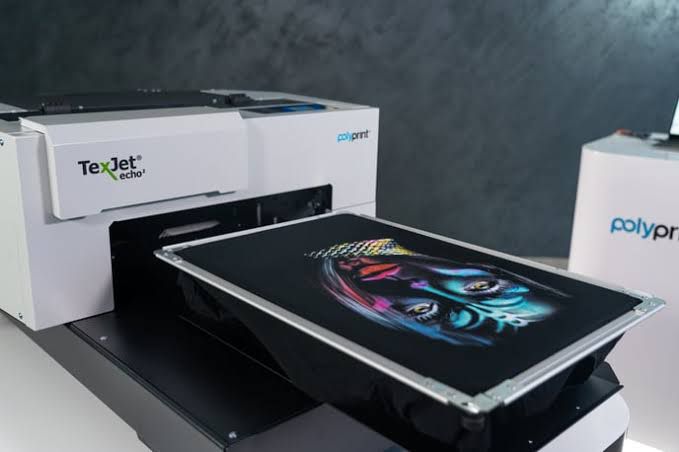
In today’s world of custom apparel and fashion, **Direct-to-Garment (DTG)** printing has become one of the most innovative and efficient methods for transferring designs onto clothing. Whether you are a small business owner, a designer, or just a fashion enthusiast, knowing about DTG printing is necessary if you want to make qualitative custom products. In this blog, we will break down what DTG printing is, its key advantages, and how it’s revolutionizing the apparel industry.
What is DTG Printing?
DTG (Direct-to-Garment) printing is one of the newer forms of modern printing technology which lets designs get directly printed on to fabric by special inkjet printers. In the process, a liquid-based water-soluble ink gets placed on to the fabric very accurately, allowing highly detailed prints that are so vivid. Since it soaks in the fibers, the ink would actually be able to print such complicated designs and even photorealistic images as well as color gradients.
Unlike most traditional screen printing and heat transfers, DTG printing works much like a standard inkjet printer, but with the difference that the design is applied directly to the fabric rather than printing on paper. With this process, one can easily print very intricate designs or even custom ones, which might take time or even be almost impossible to produce by other methods.
### How Does DTG Printing Work?
The DTG printing process can be divided into the following steps:
1. **Design Creation**: A digital design is created on graphic design software like Adobe Illustrator or Photoshop. This can include anything from logos and illustrations to full-color artwork.
2. **Pre-Treatment**: For certain fabrics, especially dark-colored ones, a pre-treatment solution is applied to the garment. This treatment helps the ink adhere better to the fabric and ensures vibrant, long-lasting prints.
3. **Printing**: The T-shirt is placed inside the DTG printer, and the image will be printed right onto the textile. This printing machine utilizes proprietary water-based inks, which are absorbed into the fabric fibers.
4. **Curing**: Once the design is printed on the garment, the shirt goes into the curing cycle, which ensures that the ink dries under the application of heat, hence creating a permanent imprint and making the image resistant to fading and cracking over time.
5. **Final Product**: The printed apparel is ready to be sold or delivered, soft, and smooth with a very good print that does not flake off, with a feel that is nice and soft, too.
### Benefits of DTG Printing
There are several benefits to DTG printing that give it an edge over traditional methods of printing. Here’s why it has changed the game for custom apparel:
#### 1. **High-Quality, Detailed Prints**
One of the greatest benefits of DTG printing is that it can produce intricate, full-color designs with fine details and smooth gradients. This technology uses precision inkjet technology, meaning there is no loss of detail in complex artwork. Whether you’re printing a logo, a photograph, or a detailed illustration, DTG provides excellent print quality that rivals the original design.
#### 2. **No Minimum Order Requirements**
DTG printing is perfect for small runs, one-off items, and on-demand printing. Unlike screen printing, which requires costly setup and large minimum orders to justify the expense, DTG printing is ideal for businesses, designers, or creators who want to print a small quantity of garments with custom designs without the hassle or expense of large production batches.
#### 3. **Full-Color Printing Without Set-Up Costs**
DTG printers can print full-color designs directly onto fabric without color separation or making screens. It eliminates the costs of setting up and labor for traditional printing, which makes it especially useful for designs with multiple colors or complicated artwork. It also does not have limitations on color transition, which is challenging in traditional methods.
#### 4. **No Limitation on Design Complexity**
DTG printing does not have the same limitations as other printing methods like screen printing, where each color in the design requires a separate screen. With DTG, you can print any number of colors in a single pass, making it easier to execute complex designs and even photorealistic images with ease. Whether your design includes hundreds of colors or intricate patterns, DTG can handle it effortlessly.
#### 5. **Soft and Comfortable Feel**
Since the ink absorbs into the fabric fibers rather than resting on top of it (like heat transfer), prints from DTG printing are soft and light. This translates to a very comfortable garment, free from stiffness or bulkiness, even after several washes. This means, for the customers, a print that looks good and feels great against the skin.
#### 6. **Eco-Friendly Option
The use of water-based ink is the normal case in DTG printing since it is environment-friendly compared to plastisol, which is generally used in regular screen printing. Water-based inks do not contain any bad chemicals and therefore generate less waste, which might be more advisable for brands considering the environment for their clothing ventures. Also, since DTG printing allows the on-demand process of printing, one can reduce some overproduction waste and extra goods.
### End
It’s now shaping the clothing industry, particularly in the world of custom apparel, fashion start-ups and small-run production. That’s how DTG is changing the game:
#### 1. **Personalization and Customization**
This is because the advent of e-commerce and the print-on-demand service has made it possible to have more customized and personalized products. Businesses that make great money through the sale of personalized apparel like custom T-shirts and hoodies, as well as accessories, can access DTG to set up unique designs specific to the preferences of individual customers. This could, for example, be the name of a customer or a special graphic or even a one-off artwork.
#### 2. **On-Demand Printing and Reduced Inventory**
It makes on-demand production absolutely perfect since a business is not required to place huge orders for stocks or maintain unsold stocks in the stores. In DTG, it only prints on the garment at the time of the order; it minimizes the generation of wastes and provides for flexibility and agility in the business. This kind of on-demand capacity is a real advantage to small businesses or even entrepreneurs when trying out a new design and will not take risks in placing big orders for it.
#### 3. **Fashion and Designer Collaborations**
DTG printing allows fashion designers to make designs much more intricate and detailed without difficulty. It has become popular for limited-edition collections, collaborations, and boutique fashion lines where exclusive, custom prints are essential to the brand’s identity. Whether making a small run of luxury items or a custom-designed collection, DTG gives designers the freedom to experiment and push the boundaries of their creativity.
4. **Sustainability and Ethical Practices**
As consumers become increasingly conscious of sustainability, the fact that DTG printing is relatively eco-friendly makes it a much more attractive option for brands prioritizing ethical production methods. The use of water-based inks, minimal waste generation, and ability to print on demand make DTG a far more sustainable choice than traditional methods, especially given the market is increasingly moving toward environmentally responsible practices.
### Future of DTG Printing
As the technology of DTG printing develops, we will see further advancements in speed, quality, and efficiency. New models of printers are faster, cheaper, and can print on a wider variety of fabrics. This means that we will be seeing even more extensive use of DTG in different sectors of the apparel industry, from small startups to large brands.
### Conclusion
The apparel industry is indeed being transformed into a more excellent, customized, and environmentally-friendly print platform because of Direct-to-Garment (DTG) printing-a very innovative, powerful technology that’s taking this industry by storm. With complex design printing capabilities and full-color without setup costs and soft, long-lasting prints, DTG becomes the most-sought solution in businesses of every size. Whether you are a designer, a small business owner, or an enthusiast of fashion, DTG printing gives you the tools you need to bring your creative ideas to life with precision, speed, and sustainability.
As the apparel market continues to embrace customization, on-demand production, and environmental consciousness, DTG printing is poised to play an even bigger role in the future of fashion.
### What is DTF Printing?
**Direct-to-Film (DTF) printing** is a relatively new method of printing garments. It is a process of printing designs directly onto a special film, which is then transferred onto fabric. Unlike traditional methods such as screen printing or heat transfer vinyl (HTV), DTF allows for more intricate designs and vibrant colors to be applied quickly and efficiently.
The DTF process involves several key steps:
1. **Design Creation**: A digital design is created using graphic design software.
2. **Printing on Film**: The design is printed onto a special PET film (polyethylene terephthalate) using a specialized DTF printer. The ink used is typically water-based and highly pigmented.
3. Powder Adhesion. Once printed, a special adhesive powder is applied to the design while the ink is still wet. This powder is then heated to make sure it adheres to the design.
4. Heat Transfer. The film with the printed design is applied to the garment, and heat is used to transfer the design from the film to the garment.
This is high-quality, long-lasting, and durable print which is bright, and it can be applied on different kinds of fabrics like cotton, polyester, and blend.
### How DTF Works and its Advantages
Having gone through the basic concepts of DTF, let’s proceed with the discussion of why DTF has gained immense popularity in the clothing industry.
#### 1. **Vibrant and Detailed Prints**
One of the most impressive characteristics of DTF printing is the ability to replicate highly detailed and vibrant designs. Whether it’s complex graphics, intricate patterns, or photorealistic images, DTF delivers top-notch print quality with rich colors and fine details. Unlike other traditional methods, DTF doesn’t require using screens or stencils; hence, printing fine lines and gradients is done easily.
#### 2. **Versatility with Fabrics
DTF printing is also versatile in terms of the type of fabrics that can be applied. Unlike screen printing, which is often limited to a specific type of textile, DTF can be used on a wide range of materials such as cotton, polyester, blends, nylon, and even leather or canvas. This makes it an ideal choice for custom apparel, accessories, and promotional items.
#### 3. **Cost-Effective for Small Batches and Customization
DTF printing is effective for small-run or custom orders because a method like screen printing would be expensive for setting up every design. Nothing needs to be spent on expensive screens or molds since DTF is a digital print type. This makes it easy to change designs when necessary because of the digital nature of the print. Thus, DTF is perfect for businesses looking to make custom apparel without breaking the bank, particularly for a small batch or on-demand printing.
#### 4. **Soft Feel and Durability**
The soft feel of DTF prints is one of the major advantages over other heat transfer methods. Unlike screen printing, where the ink can sit on top of the fabric, DTF prints blend into the fibers of the material, resulting in a smoother, softer finish. DTF prints are also very durable. They do not crack or fade easily, even after multiple washes, making them a great choice for creating long-lasting designs on clothing.
#### 5. **Quick Turnaround Time**
DTF printing offers a faster production turnaround compared to some traditional printing methods. Since it’s a digital process, there’s minimal setup time required, and multiple designs can be printed simultaneously. This is a huge advantage for businesses that need quick delivery times for custom orders or limited-edition apparel.
### DTF in the Clothing Industry: How it’s Revolutionizing Fashion and Apparel
DTF printing has changed the face of clothing production and customization, due to its versatility, affordability, and quality. Here is a look at how DTF is playing a key role in the clothing industry:
#### 1. **Custom Apparel for Small Businesses and Startups
DTF printing opens the floodgate for small enterprises and entrepreneurs that can afford them to print high-quality bespoke apparel with negligible upfront costs. Whether a brand of clothing, looking for custom designs for some of their articles, or the business offers some personalized merchandise items, DTF makes it very easy and economic to print such products in fewer quantities. And with one-offs, there would be more than enough reason for niche markets and custom requests.
2. **On-demand Printing and E-commerce
With e-commerce and print-on-demand services emerging, DTF printing is more popularly being used by online stores and businesses dealing in personalized clothing. With no minimum order requirement and large productions runs, DTF printing helps businesses print designs on demand, thereby minimizing the need for holding massive inventory and minimizing waste. Customer order of customized designs; after a couple of days, the designs are printed and shipped to the customer.
3. Fashion and designer collaborations
DTF printing can be used on a number of fashion pieces, such as limited-edition collections and collaborations from famous fashion designers and apparel brands. This fast and affordable creation of high-quality, intricate designs makes it easier for designers to try out new concepts and add bold, creative graphics to their collections. The fashion world has always been known for its dynamic versatility in graphic tees, streetwear, athleisure, and many more with the help of DTF printing.
#### 4. **Eco-Friendly Printing**
Since DTF printing employs water-based inks and produces very little waste in terms of setup, it can be regarded as a greener option than screen printing, which requires toxic chemicals and massive amounts of water for cleaning. The direct-to-film process of DTF also reduces the use of physical screens or stencils, which can be expensive and wasteful.
Conclusion
DTF (Direct-to-Film) printing is moving fast through the clothing industry, creating versatile, cost-effective, high-quality printing. Something from bright and detailed prints to customization and reducing waste, it plays a great role in fulfilling the requirements of the modern fashion world. Whether one is a small business operator, an e-commerce retailer, or a fashion designer, DTF provides an innovative outlet to produce superior quality garments with comfort and ease.
The continued advancements in technology make DTF printing even more inevitable as an essential component of the fashion and apparel industry, providing easy means for making unique clothing items that meet customers’ demands.
### What is GSM? A Simple Definition
GSM stands for **Grams per Square Meter**, which is a measurement of weight or density. It is how much fabric is actually contained within a square meter of material. A simple word, GSM helps determine how thick, dense, or light a fabric is. Its texture, durability, and usability depend on it.
### Importance of GSM in Clothing Industry
GSM is an essential parameter in the clothes industry for quality and suitability of a fabric for various products. This is why it matters. It establishes why:
1. Fabric thickness and feel:
– GSM refers to the thickness of the weave; the thicker the weave, the heavier the fabric; the thinner the weave, the lighter the fabric. Less substantial and less luxurious fabrics are thus at lower GSMs, while those preferred for warm-weather clothes and layering would be at lower GSMs.
2. **Durability:**
– The higher the GSM, the more durable and long-lasting the fabric is because it has more material in its structure. For instance, heavier GSM fabrics like denim or canvas are known for their strength and resistance to wear and tear, while lighter GSM fabrics like cotton voile or muslin may not withstand harsh use as well.
3. **Breathability and Comfort**:
– The GSM of a fabric can also influence its breathability. Lighter GSM fabrics, such as those with a GSM of 100-150, are often preferred for summer clothing like T-shirts or blouses because they allow air to flow through, keeping the wearer cool. Heavier GSM fabrics, like those in towels or sweatshirts, provide more insulation and warmth, making them ideal for colder weather.
4. **Purpose of the Garment**:
– Various types of clothing need different GSM ratings. For example:
– **T-shirts**: A normal T-shirt would have a GSM between 140-200. The lighter GSM T-shirts are soft and perfect for hot weather, while heavier GSM T-shirts provide a more structured fit and can be used for colder months.
– **Towels**: Towels are usually more absorbent and plush due to their higher GSM, which ranges from 350 to 700 GSM.
– **Sweatshirts and Hoodies**: These have a GSM of 280-350, making them warm and comfortable during the colder seasons.
5. **Quality Indicator**
– GSM can also serve as a determinant of the quality of fabric. For instance, premium cotton fabric might have a higher GSM that would make it feel more luxurious and thick. Lower GSM fabric, on the other hand, may be less expensive but may be flimsier or less durable.
### GSM and Fabric Types
GSMs can vary in different fabrics based on the type of material used and the intended use. Some examples include:
– **Cotton**: The fabrics may vary between lightweight and fluffy, with an average GSM around 100, used for summer dresses to heavy and dense, about 500 GSM for towels or thick bedding.
– **Polyester**: Polyester’s average GSM tends to range from 100 to 300 in most clothing items such as shirts, sportswear, and outerwear.
– **Denim**: Denim fabric is typically a bit higher in GSM, at around 200-400 GSM, which explains why it is more durable and robust.
### Determining GSM
GSM is usually measured in a lab by specialized equipment. But you can do a quick check at home. Here’s how:
1. Cut a piece of fabric approximately 10 cm x 10 cm in size.
2. Measure the weight of the fabric on a sensitive scale.
3. Apply the formula to calculate GSM:
**GSM = (Weight of Fabric in grams / Area of Fabric in square meters) x 1000**
This is a very rough estimate and is usually used for small-scale measurements, such as checking fabric samples.
### The Bottom Line: Why You Should Care About GSM
Understanding GSM is important while shopping for clothing and fabrics because it lets you decide on your clothing needs about fabric quality, comfort, and durability. If you seek a soft, breathing T-shirt for summer or a cozy, heavyweight towel, knowing the GSM of a fabric will allow you to choose the right product according to your needs.
Ultimately, GSM is a key indicator of fabric characteristics, making it an essential part of both production and consumer decision-making in the clothing industry. Next time you come across GSM listed on a product label, you will have a deeper understanding of what that number means and how it influences the feel and performance of the garment!


